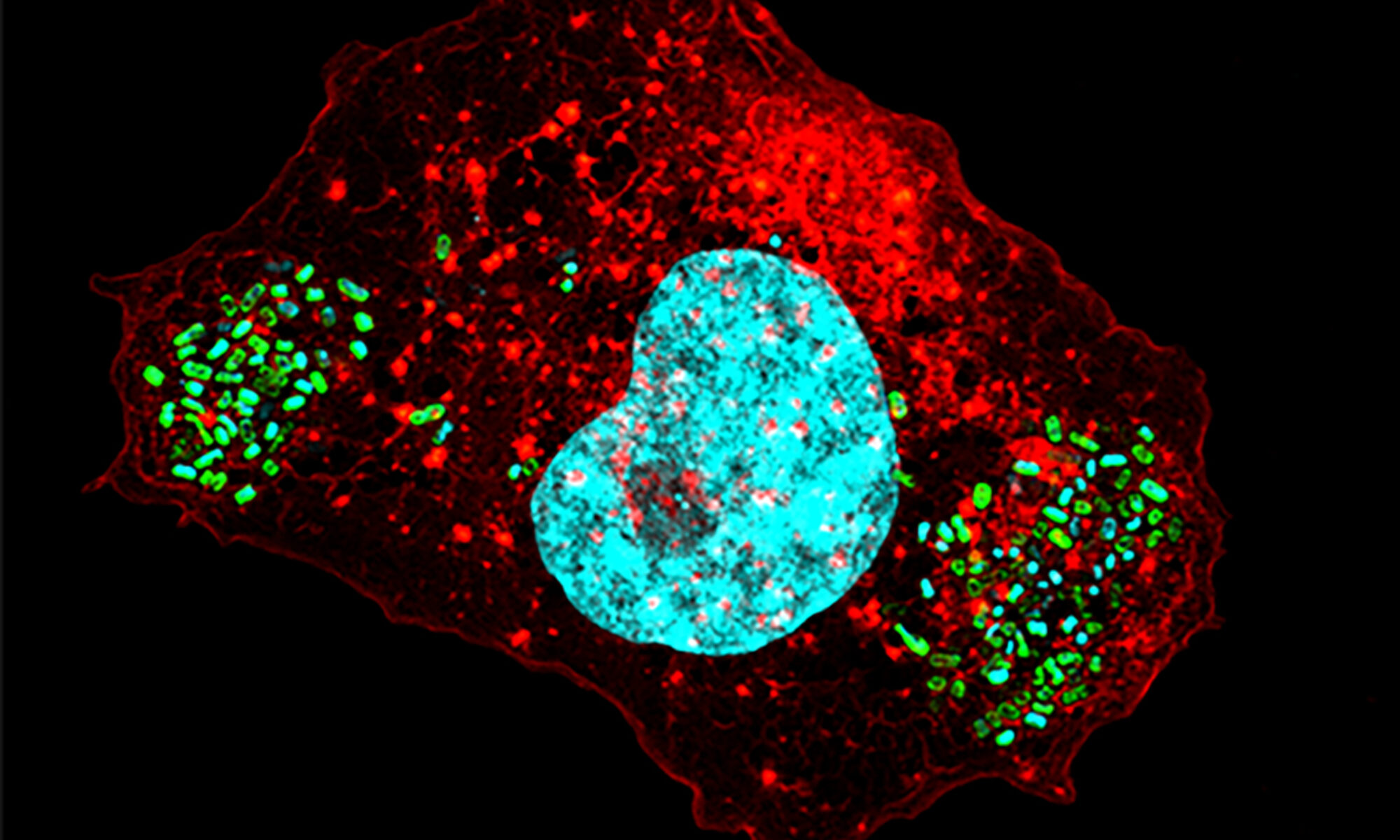Mass spectrometry-based proteomics has been extensively used in the field of cell biology and immunology, allowing the quantification of thousands of proteins as well as their modifications, localization, and dynamics for understanding cellular functions and processes on molecular level. Proteomics often provides a hypothesis-free and systems-wide characterisation of cellular or organellar proteomes. A standard proteomics workflow includes the following steps: extraction of proteins from cells or tissue, protein digestion by a protease into peptides, separation of peptides by liquid chromatography with online analysis of peptides by tandem mass spectrometry (LC-MS/MS), database-search for protein identification and software based quantification of the peptide ion intensities.

A key challenge in proteomics is to resolve and detect peptides in very complex samples. Protein mixtures from cells are highly complex and have often concentration differences of 8 orders of magnitude in the same sample. Through the digestion into peptides even more complex mixtures are generated. Thus, to reduce the complexity of cellular samples, various fractionation methods were developed either on protein level and/or peptide level, such as SDS-PAGE, two-dimensional gel electrophoresis (2-DE) and multidimensional chromatography. Multidimensional liquid chromatography (usually two-dimensional) separates peptides into fractions, each one of which is analysed by mass spectrometer and thus increases the numbers of peptides detected. The most widely used methods are an off-line fractionation step followed by (low pH) reversed phase liquid chromatography (RP-LC) directly coupled to the mass spectrometer. Off-line fractionation methods often separate peptides or proteins according to properties such as their size (size exclusion), charge (strong anion or cation exchange) or hydrophobicity (high pH reversed phase, HILIC). For example, previous work in our lab used a novel hydrophilic strong anion exchange (hSAX) approach to identify 9469 unique proteins from RAW 264.7 macrophage cell lysate, providing a robust and reproducible method for deep coverage proteomics analysis (Ritorto et al, J Proteome Research, 2013).
Biochemical and/or cell biological approaches can also serve to reduce complexity of protein mixtures from cell lysates. For example, immunoprecipitation and pull-down pre-enrichment are widely used to extract targeted protein mixtures from complex samples. Later, more attention has been drawn to subcellular proteomes because proteins may change subcellular locations although their abundances in total cells remain unchanged. In addition, advanced techniques emerged for analysing subcellular translocation of proteins based on the concept that proteins in the same organelle should be co-purified to show similar abundance pattern over fractions during subcellular fractionation. It is exemplified by localization of organelle proteins by isotope tagging (LOPIT) strategy. For post-translational modification (PTM) studies, further enrichment steps are essential for analysing the relatively low abundant modifications, such as phosphorylation, ubiquitylation and glycosylation.
In a typical proteomics analysis, peptides eluted from on-line reversed phase-LC are ionized by electrospray at the tip of the column and directly injected into mass spectrometer. Mass spectrometers accurately collect the mass-to-charge ratio [m/z] of each peptide for identification and record its ion intensity for quantification (MS1). Simultaneously (in a second mass analyser of the instrument) or sequentially (in the same mass analyser) with acquisition of MS1, selected peptides are isolated, fragmented and the spectrum recorded (usually referred as MS/MS or MS2). Thus, this online liquid chromatography coupled tandem mass spectrometry analysis is usually termed LC-MS/MS.
The protein identification by MS can only determine “presence” of a protein as a binary qualitative method (“presence” or “absence”). In cell biology, it is more important to investigate how proteins change from one condition to another than just to identify these proteins. The quantitative proteomics analysis reports the relative abundances of thousands of proteins by comparing between runs using label-free quantification or by stable isotope labelling approaches in one run. In a label-free quantification analysis, the peptides from different biological samples are prepared separately and analysed by mass spectrometer sequentially. The intensities of a peptide in MS1 or the numbers of acquired spectra in MS2 from different runs are compared. The stable isotope labelling quantification is based on labelling proteins/peptides with different mass tags metabolically or chemically such as SILAC, dimethyl labelling or tandem mass tags (TMT)-labelling. For isobaric labelling such as TMT, the labelled peptides are un-distinguishable and co-isolated in MS1 to be fragmented into MS2, from which the low mass reporter ions are generated. The ratio of reporter ions represents the relative abundance of the peptides.
Members:
Mengchun Li 🇨🇳
Ruth Walker 🇬🇧
Simran Raheja 🇨🇭🇮🇳

